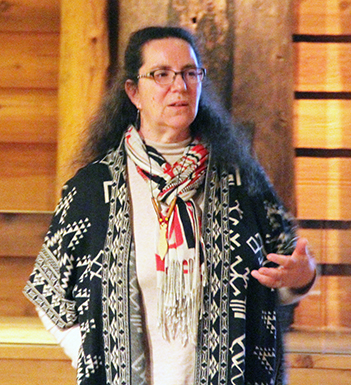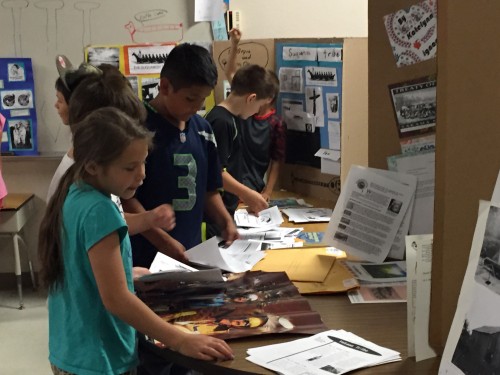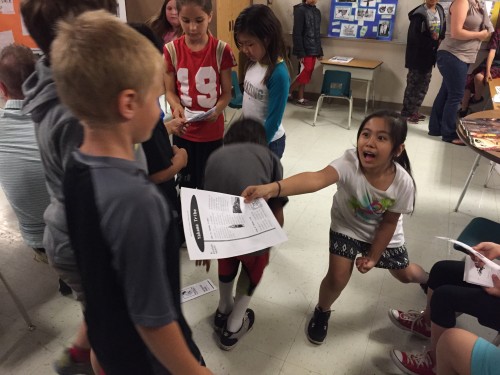By Kalvin Valdillez, Tulalip News

Since Time Immemorial (STI) is a curriculum created to educate Washington State elementary through high school students on the history, culture, traditions and sovereignty of the Northwest coastal tribes. The school districts will meet frequently with local tribes so their students can learn first-hand about the resilient people of Native America and the unfortunate journey we have experienced since Christopher Columbus ‘discovered’ the new world.
In the early 2000’s, Tulalip tribal member and Washington State Senator, John McCoy wrote House Bill 1495 that encouraged Washington school districts to teach students about local tribes. Since the bill was passed less than 30% of the school districts participated in teaching the history of neighboring Native communities. In 2014, Senator McCoy presented a new bill, Senate Bill 5433. House Bill 1495 and Senate Bill 5433 were essentially the same, however, the slight alteration of verbiage changed Native American education from being encouraged to a requirement.
During the time period between the two bills, STI was created and made available for the schools that chose to participate. Since then the creators have been able to fine-tune the curriculum by trial and error of participating school districts. The end result is a free, easy accessible curriculum that includes full lesson plans, videos, reading material, and activities that will potentially put an end to stereotypes and misconceptions of Native People that many non-natives possess.
Certified STI instructor, Dr. Laura Lynn, recently spoke to educators, administrators, and parents from the nearby school districts of Edmonds, Mukilteo, Monroe and Arlington at the Hibulb Cultural Center to discuss the background, and to present an in-depth view of the curriculum.
“What a time to be alive and in education!” Dr. Lynn exclaimed. “The intent of this meeting is not to shame but to give a clear understanding of the Native communities. By sharing the curriculum with our students, it is going to help them become informed citizens. As our youth step up into leadership roles they will be deeply connected with the community. As educators we aren’t teaching our students so they can leave, but so they can grow. We need to assist them as they perfect their talents and give them the tools they need to enrich our communities.”
Dr. Lynn expressed that the youth need to understand the true history of local tribes. She explained that America often tries to downplay the tragedies that occurred to Natives and make it feel like it took place a long time ago. When in reality the elders of today’s tribes were taken from their families and placed into boarding schools where they were forced to learn the white culture and lose their traditional cultural teachings.
Before STI, the story of the birth of America often leaves out the fact the U.S. Government stole its land by murdering Native Americans. That is only the beginning of the countless atrocities the government committed against the Indigenous community. Dr. Lynn stated, “We are not fulfilling our duties if we are not being honest about the genocide, the assimilation, and the boarding schools. It is important that you know the history because you can teach a curriculum, but if you don’t understand the spirit and the intent behind it, you will tend to make the same mistakes repeatedly.”
Dr. Lynn quickly went through a lesson plan with the educators titled ‘The 600 Memorial Lesson Plan’ she said, “Since [House Bill 1495] was signed, over 87% of school districts did not participate in teaching the history of Native People. The only native history we have been teaching is in a post 1900 context. Think about it. Close your eyes and envision the image of a Native American tribal member. Because of what is portrayed in our history books, in our minds we are living with a stereotype. The image is usually in a post 1900 context and its usually of a tribal member who is not from this region. The 600 Memorial Lesson Plan addresses the stereotype issue. During this lesson, students will learn about contemporary issues that local tribal communities are facing today. It will give our students a chance to meet with and understand contemporary Native People, giving us a chance to finally dissolve those stereotypes that often lead to racism and barriers.”
The event concluded with a story, exclusively for the educators, by Master Carver/Storyteller Kenny Moses. As more schools are starting to implement the STI curriculum, the hope of a better tomorrow emerges. An opportunity for a future without harmful stereotypes and offensive mascots is presented. Coast Salish tribes will finally get to share our similar yet unique story as Native Peoples.
For more information about STI and for upcoming classes and seminars, visit www.indian-ed.org






